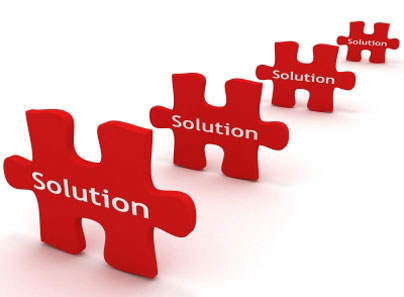SoftRoots Application Solutions
 Web
Web
Today, with key advancements in computer hardware and software, Internet accessibility, web-based programming languages, security Standards, browser technologies, supporting frameworks, and development tools to name just a few, web applications have become both commonplace and practical. Some of these include online reservation systems, webmail, online retail sales, online reporting systems, online auctions, web portals that incoroprate business process and/or operations, wikis, instant messaging services, as well as many other objectives. Web applications have provided businesses with the means necessary to compete successfully in the online market, as well as tools required to support their employees and their customer base.
For many situations, the success of a web-based solution is partly determined by the technologies and frameworks utilized by an application. These can help to determine whether or not the web application will effectively address the business's security and authentication concerns, if it will be easily accessible on various devices, if it will be flexible enough to support legacy and/or future applications that it may need to interact with, if it can be extended upon for future enhancements, how easy or difficult an integration effort might be, if it will be cost-effective in the long-term, if it will be easily maintainable, and effectively address the business objectives for its use. These are all key factors that should be considered in the development and implamentation process of a web-based aplication solution in addition to addressing the primary functional requirements for the application itself. Our Consulting Services can help clients to better understand the different issues and options that may be available for a web-based solution.
 Mobile
Mobile
Mobile applications are not only popular among businesses and users alike, but they're also becoming much more proficient in handling many tasks not feasible in the past. Today, we are experiencing major advancements in mobile technologies, frameworks, and devices, enabling mobile applications to compete with desktop applications in a business environment. These advancements have already resulted in new businesses, and have created many new business opportunities. The growth of mobile apps is expected to continue as technologies and frameworks continue to advance, platform technologies continue to evolve, and as mobile ideas are brought to realization.
To implement a successful and practical mobile strategy, it's imperative to fully-understand the client's specific requirements, needs and expectations of the solution, the current frameworks and technologies available, as well as other key factors leading to the client's success. This will often entail research, investigations, and proof-of-concepts prior to implementation to ensure continued success of the mobile solution into the future.
 Desktop
Desktop
Software application development began with desktop applications, which in the beginning could only be utilized on standalone desktop machines. By definition, a desktop application described software that could be installed on a single computer (laptop or a desktop). Regarding business applications, these were generally exercised to perform specific task(s) in support of business operations. Today, business applications have grown significantly, providing for a wide-range of business services and operations. Desktop solutions now often utilize secure communications and integration to leverage available business services and data across the corporate network infrastructure.
Available development frameworks and state-of-the-art technologies for a desired platform should be considered prior to any development initiative. This will help to ensure a successful strategy in addressing the business requirements and objectives. Additionally, take into consideration other systems, resources, and factors (e.g., servers, databases, etc.) within your business environment, so as to bring-about a solution to best-fit your business operations.
 Enterprise
Enterprise
Enterprise applications usually require adherence to specific technologies, frameworks, core functionality, and processes to effectively interact with other solutions, servers, services, and data within an existing enterprise environment. As such, enterprise applications are usually tailored and fine-tuned, and often are highly-customized to meet specific business needs within a corporate environment. Traditionally, enterprise applications are large multi user, multi developer and a multi component based applications that can take advantage of network distributed resources within a business environment.
Modern enterprise application development focuses on reducing the application development timelines, while taking advantage of newer technologies and available resources to "jump-start" enterprise development initiatives to help contain development costs. Today's changing trends with enterprise applications are moving more toward cloud-computing, RAD development, and loose coupling architectures (e.g.; APIs, Microservices, and Composable Infrastructures).
Additional Benefits
Flexibility
Providing flexible solutions to support usability across business environments without compromising capabilities.
Security Aware
Enabling security awareness in solutions to more-fully control and protect your business assets across the IT infrastructure.
Governance
Supporting governance of solutions when needed to manage corporate and/or industry compliance requirements.
Legacy Support
Providing legacy support if needed to interact with your existing business applications, systems, and data.
Seamless Integration
Addressing the platform and technology integration needs across the IT infrastructure environment.
Customizable
Customizing solutions to more-fully meet your expectations, while supporting your specific business needs.






